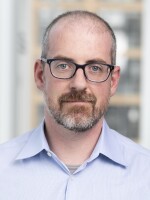AILSA CHANG, HOST:
At NASA headquarters today, scientists, government officials and even a former astronaut gathered to discuss unidentified anomalous phenomena - try saying that really fast. That is the official government title for what used to be called UFOs. The expert panel is trying to bring more scientific rigor to the study of UAP. And joining me now to discuss how that might happen is NPR science correspondent Geoff Brumfiel. Hey, Geoff.
GEOFF BRUMFIEL, BYLINE: Hi, Ailsa.
CHANG: Hi. OK, so what exactly is a UAP?
BRUMFIEL: It could be anything in the air, in space, or even, like, underwater. It's something that people see, and they don't know what it is. And there was a great example last night, actually.
CHANG: Oh.
BRUMFIEL: If you lived in the central southern U.S., you may have seen a mysterious object streaking across the sky.
(SOUNDBITE OF ARCHIVED RECORDING)
UNIDENTIFIED PERSON #1: Is that a meteor?
UNIDENTIFIED PERSON #2: Whoa.
UNIDENTIFIED PERSON #1: I don't know.
BRUMFIEL: So people were posting videos all over Twitter, wondering if it was a UFO. Turns out it was actually a SpaceX capsule...
CHANG: Ah.
BRUMFIEL: ...Returning from the International Space Station. But it really gives a sense of how in the modern era of cellphones and social media, these events get noticed. And they get shared, and they raise a lot of questions.
CHANG: Totally. OK, so tell us why NASA is getting involved officially here.
BRUMFIEL: Well, yeah, yeah. So the government recently centralized its system for reporting UAP sightings. And they really started to stack up. At this conference, a person from the Pentagon said the military had now collected over 800 reports. That number is expected to grow. And NASA Administrator Bill Nelson felt the space agency really needed to weigh in on this. It makes sense. They're a big, public agency full of scientists. So they've convened this panel of experts to try and determine the best way for them to tackle this UAP problem.
CHANG: I mean, 800 reports sounds like a lot. Do we even know what some of those things getting reported are?
BRUMFIEL: Actually, it turns out we do. In fact, we know most of them. They're weather balloons, maybe the occasional spy balloon...
CHANG: (Laughter).
BRUMFIEL: ...Drones, aircraft. Sometimes they're just tricks of the light. One of the panelists is Scott Kelly, a former NASA astronaut and fighter pilot. And he said these sorts of illusions are quite common.
(SOUNDBITE OF ARCHIVED RECORDING)
SCOTT KELLY: The environment that we fly in - space or, you know, in atmospheric flight - very, very conducive to optical illusions.
BRUMFIEL: It can be an effect caused by, say, zooming in far away with a high-powered camera, or sometimes it's an atmospheric phenomenon. Bottom line - once you rule out the balloons and the like, the Pentagon says only about 2- to 5% of what's reported are true UAP - probably not aliens...
CHANG: Darn.
BRUMFIEL: ...But also maybe aliens. We don't know?
CHANG: Maybe. OK, so what did the scientists say about the ones that we don't understand? Like, how can they even work out what exactly is going on?
BRUMFIEL: With science - the scientific method.
CHANG: Of course.
BRUMFIEL: But they need better data. So science journalist Nadia Drake was one of several panelists who really emphasized the need for this better data.
NADIA DRAKE: Collecting more good data for the scientific community to review in a peer-reviewed context will be important for progress to be made here.
BRUMFIEL: A lot of the panel's discussion today was about how to organize all the data out there, try and make a more scientific study of these phenomena. It's going to be a tall order given what they have, but I think there's plenty of room for progress, particularly with new tools, like artificial intelligence, that could actually help them sort of sort out some of the images that they're getting.
CHANG: That is so cool. And that is also NPR's Geoff Brumfiel. Thank you, Geoff.
BRUMFIEL: Thank you, Ailsa. Transcript provided by NPR, Copyright NPR.



